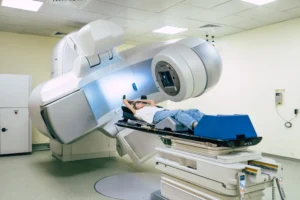Navigating Treatment Options: A Comprehensive Guide to Breast Cancer Therapy
A breast cancer diagnosis can be daunting, but understanding the available treatment options is crucial for making informed decisions about your care. From surgery and radiation to chemotherapy and hormone therapy, there are various approaches to breast cancer treatment, each tailored to the individual patient’s needs. In this blog, we’ll provide a comprehensive guide to breast cancer therapy, empowering patients with knowledge and resources to navigate their treatment journey with confidence.
Surgery:
Surgery is often the first line of treatment for breast cancer and may involve either breast-conserving surgery (lumpectomy) or mastectomy. Lumpectomy involves removing the tumor and surrounding tissue, while mastectomy involves removing the entire breast. The choice of surgery depends on factors such as tumor size, location, and patient preference.
Radiation Therapy:
Radiation therapy uses high-energy beams to target and destroy cancer cells in the breast. It is typically recommended after surgery to reduce the risk of cancer recurrence. Radiation therapy may be administered externally (external beam radiation) or internally (brachytherapy), depending on the specific treatment plan.
Chemotherapy:
Chemotherapy involves the use of powerful drugs to kill cancer cells or prevent them from growing and dividing. It is often used in combination with surgery and/or radiation therapy to treat breast cancer that has spread beyond the breast. Chemotherapy regimens vary depending on factors such as tumor type, stage, and patient health.
Hormone Therapy:
Hormone therapy is a targeted treatment that blocks the effects of estrogen or progesterone, hormones that can fuel the growth of certain types of breast cancer. It is commonly used to treat hormone receptor-positive breast cancer and may be prescribed alone or in combination with other therapies.
Targeted Therapy:
Targeted therapy is a type of treatment that specifically targets cancer cells while sparing healthy cells. It may involve drugs that target specific proteins or genetic mutations associated with breast cancer. Targeted therapy is often used in combination with other treatments and can improve outcomes for certain patients.
Immunotherapy:
Immunotherapy is a promising new approach to cancer treatment that harnesses the body’s immune system to recognize and destroy cancer cells. While still being studied in breast cancer, immunotherapy has shown promising results in certain patient populations and may become an important part of future treatment regimens.
Clinical Trials:
Clinical trials are research studies that test new treatments or treatment combinations for breast cancer. Participating in a clinical trial may offer access to cutting-edge therapies not yet available to the general public and contribute to advancements in breast cancer treatment.
Navigating breast cancer treatment options can be overwhelming, but it’s essential to work closely with your healthcare team to develop a personalized treatment plan that addresses your specific needs and goals. By understanding the available therapies and actively participating in treatment decisions, patients can take control of their health and improve their outcomes.
For more information on breast cancer treatment options and support resources, visit Pink Ribbon’s website at pinkribbon.org.pk






